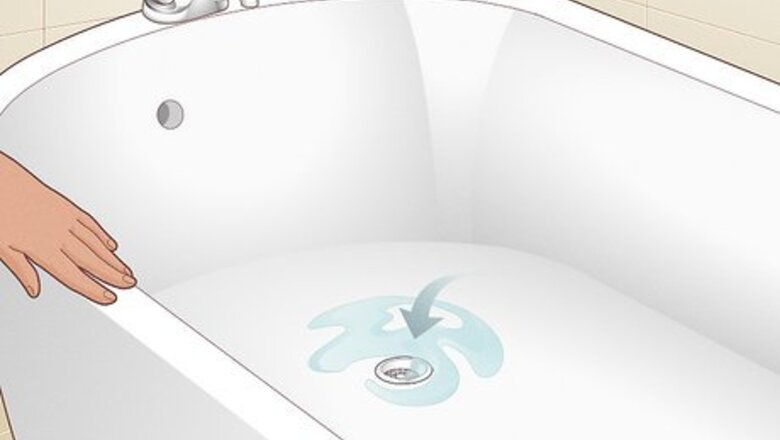
views
Preparing the Drain Mixture
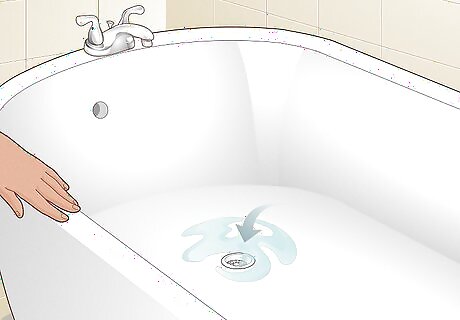
Drain any water from the sink or tub. If it's really slow-draining, this may take a while, but if you remove the water, your drain-clearing mixture will be able to unclog faster.
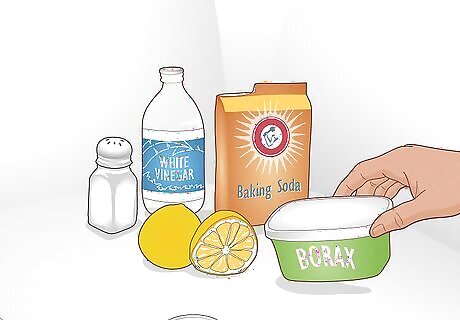
Gather household cleaning/kitchen items. You have several options for creating a non-commercial drain opener. Most involve vinegar and another substance that create a chemical reaction when combined. See if you have any of these drain-opening agents on hand: Vinegar (white or apple cider vinegar work) is the acidic base for creating the foaming reaction. Lemon juice is acidic like vinegar, but smells refreshing. This makes lemon juice a good option for clearing out clogged kitchen sinks. Baking soda is frequently used as a multipurpose cleanser. Salt will help eat away at the clog. Borax is frequently used as a multipurpose cleanser.
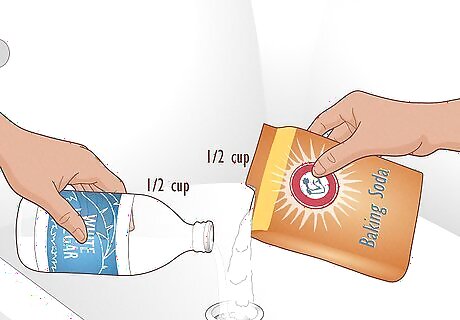
Pour vinegar and another drain-opening agent down the drain. No mixing is needed before pouring down the drain. The mixture will foam up on its own as the chemical reaction occurs. For a vinegar and baking soda combination: use 1/2 cup of baking soda and 1/2 cup of white vinegar. For a lemon juice and baking soda combination: use 1 cup of baking soda and 1 cup of lemon juice. For a salt, borax, and vinegar combination: use 1/4 cup of borax, 1/4 cup of salt, and 1/2 cup of vinegar. EXPERT TIP Susan Stocker Susan Stocker Green Cleaning Expert Susan Stocker runs and owns Susan’s Green Cleaning, the #1 Green Cleaning Company in Seattle. She is well known in the region for outstanding customer service protocols — winning the 2017 Better Business Torch Award for Ethics & Integrity —and her energetic support of green cleaning practices. Susan Stocker Susan Stocker Green Cleaning Expert You can also pour vinegar down the drain on its own. Pour about 1 cup of vinegar down your drain and let it sit for 30-40 minutes. Vinegar has a very high acid content (which is why it's great on soap scum) and it will break down a good bit of the organic content that is stuck.
Agitating the Clog
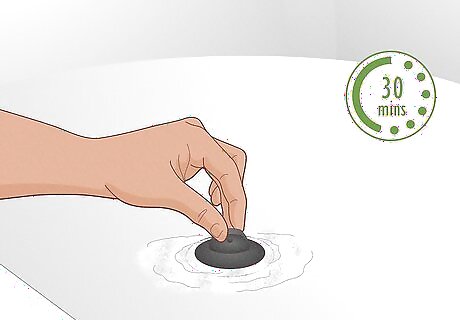
Cover and let the mixture sit. Either use the tub stopper to close the drain or cover it with a steaming hot cloth. Keep the drain closed for 30 minutes. During this time, the foam will be working on wearing down the clog.
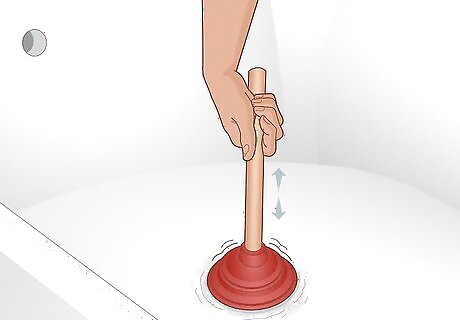
Plunge the drain. Use a small, sink size plunger to agitate the clogged-up material. Create a seal and push up and down on the rubber base of the plunger. Plunging works best if you fill the tub or sink with water. The added pressure from the water will help force open the clog.
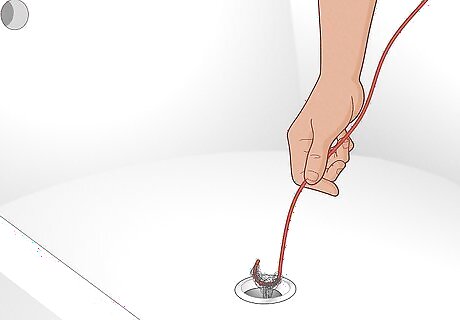
Use a hanger to pull out the clog. If the drain is clogged with hair, take a metal hanger and twist it till you have a long piece of metal with a small hook at one end. Carefully feed the hook end of the wire down the drain. Twist the wire around and try to snag the clog. Gently pull the wire back out once you've caught the clog. Take care not to scratch your sink or tub with the exposed metal. Also, use caution when untwisting the hanger. The metal may be sharp.
Use a drain snake. A drain snake looks like a long metal rope. You'll need to carefully feed the snake into the drain. When the snake gets stuck, you'll want to turn the cable. This will make it catch onto the clog. When you slowly pull the snake back out, the clog should clear. Flush with water and repeat. Wear work gloves since the metal snake can be sharp. You should also have an old towel and bucket handy to set the clogged material.
Flushing the Drain
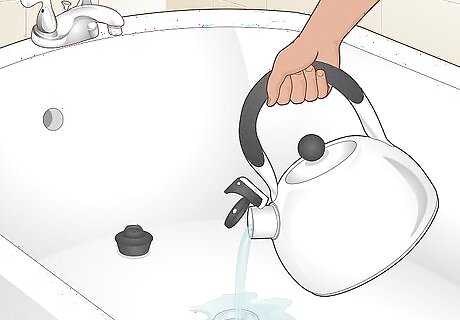
Flush the drain with hot water. Boil at least 6 cups of hot water or several kettles full of water. Uncover the drain and slowly pour the hot water down. If you have plastic piping, just use very hot water. Avoid pouring boiling water in the drain. Use common household items to clear drains. "My wife's long hair always clogs our bathroom sink. I had forgotten the simple homemade drain cleaner I used to use. This article jogged my memory — vinegar, baking soda, and hot water are inexpensive and effective for clearing drains. I'm glad to have an eco-friendly solution." - Jim M. Dissolve clogs with vinegar and baking soda. "I've been using baking soda and vinegar to try to clear my stubborn, clogged kitchen sink drain. Reading that this combination actively reacts with and dissolves gunk reassured me I'm on the right track with my homemade drain cleaner. A few more treatments should do the trick." - Anthony D. Unclog with multiple homemade solutions. "With a completely clogged bathroom sink, I appreciated this article presenting multiple homemade drain-clearing solutions. I now have several safe, inexpensive options to try — vinegar, lemon juice, baking soda, borax, and boiling water. I'm confident one will work to clear my drain." - Jerry M. Flush repeatedly with boiling water. "I tried flushing my clogged tub drain with boiling water per this article. It took several kettle-fulls, but eventually, the water started draining faster. Repeatedly pouring hot water and plugging the drain helped dissolve the clog. My tub drains freely now." - Taze B. We want to hear from you! Advice from our readers makes our articles better. If you have a story you’d like to share, tell us here.
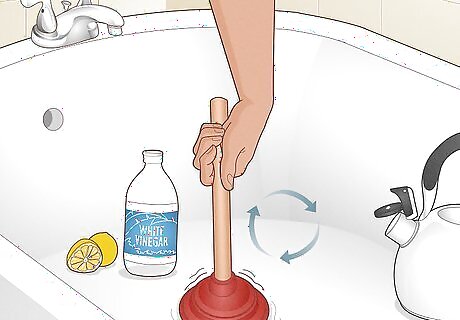
Repeat. If the water is still draining slowly, repeat the process again until the drain becomes clear. If the clog still stubbornly resists draining, you may have a hairball stuck. This may require manually removing the clog. Consider calling a plumber, especially if the drain completely stops up.
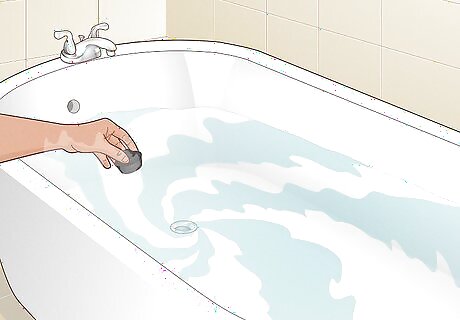
Use gravity and pressure to flush the drain. This works best on a clogged tub, since you can fill the tub with gallons of water. Fill the tub with hot water. Then, open the drain and let the pressure of all that water help break up the clog.




















Comments
0 comment